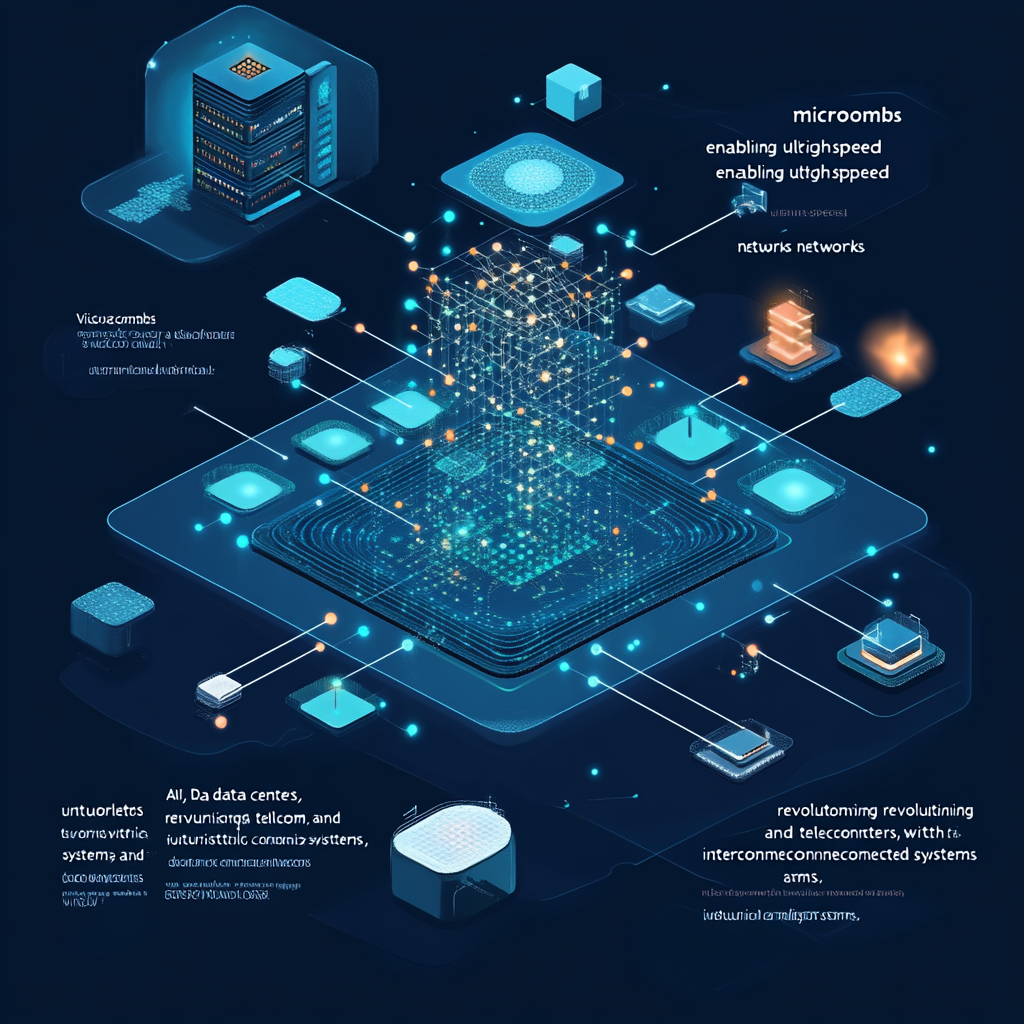
Microcombs could be key in meeting bandwidth demands for artificial intelligence and data centers
Microcombs: The Quiet Revolutionaries of AI and Data Centers
In a world spinning faster than a caffeinated squirrel on a roller coaster, where artificial intelligence and data centers form the backbone of our digital civilization, we're confronted with a rather pressing puzzle: how do we keep up with the insatiable thirst for bandwidth? Enter the unsung heroes of the tech realm—microcombs. These nifty, compact devices might not be on the frontlines of your tech news feed, but they’re quietly poised to redefine high-speed communication networks as we know them. Buckle up, dear reader, as we take a ride through the fascinating universe of microcombs, where technology meets potential in ways that may leave you breathless.
So, what exactly are microcombs? Think of them as the rock stars of the photonics scene, integrating high-Q optical resonators that exploit Kerr nonlinearity to whip up coherent optical frequency combs like a barista crafting the perfect latte. Unlike the old-school mode-locked lasers that look as complicated as a Rubik's Cube after a few too many drinks, microcombs employ a more straightforward approach using a continuous-wave (CW) laser. This makes them not just compact and energy-efficient, but also highly flexible—perfect for demanding applications ranging from telecommunications to quantum optics, a field that sounds like it could use a drink too.
Now, let’s get into the potential applications because that's where the magic happens. Data centers—those cavernous fortresses of servers processing an unimaginable ocean of information—are under siege from a tidal wave of internet traffic. With AI applications growing faster than my to-do list on a Monday morning, microcombs hold the power to transmit data at mind-boggling speeds of over one petabit per second. Just imagine the sheer volume of cat videos and memes that could traverse the wires! It’s a bandwidth buffet that could alleviate the stress on our beloved data centers.
What about artificial intelligence, the sophisticated brainchild of our technological age? High-speed data transmission isn’t just a luxury; it's a necessity for efficiently training and deploying AI models. Microcombs usher in the potential for lightning-fast data exchange, which could mean more accurate and complex AI computations. A win-win situation, if you ask me.
Let's not forget telecommunications at this point, because, let’s face it, we all rely on stable and reliable connections for everything from binge-watching that new series to posting photos of our lunches. Microcombs make waves in optical communication networks globally, ensuring users remain seamlessly connected, no matter where they are scrolling through their feeds.
In the research arena, a groundbreaking advancement has emerged from Chalmers University of Technology, where the clever minds have figured out how to boost microcomb efficiency tenfold. Using dual micro-resonators, they've found a way to crank up laser power conversion from a mere 1% to a staggering 50%. This isn't just a trivial upgrade; it’s a monumental shift that could pave the way for microcombs to achieve widespread adoption. Talk about putting the pedal to the metal!
And the market impact? Buckle your seatbelts because the ripple effect of microcombs is more vast than a sea of jellyfish at a summer beach party. Companies like Iloomina AB are working tirelessly to commercialize this technology, and it’s expected to upend various industries as we know them. Picture this: autonomous vehicles equipped with high-performance lasers courtesy of microcombs, enhancing the capabilities of lidar modules for safer and smarter driving experiences. Or even improved navigation systems with optical clocks that could redefine how we find our way, ensuring we never take a wrong turn while trying to find the nearest coffee shop.
Don’t overlook the medical field, either. Precision spectroscopy—an intricate dance that benefits from microcomb finesse—could revolutionize disease diagnosis. With microcombs in our diagnostic toolbox, the fight against illnesses might enter a new, powerful era.
In conclusion, microcombs are not merely a flash in the pan; they represent a formidable front in the evolution of photonics. Offering innovative solutions to the escalating challenges faced by AI and data centers, these tiny giants could increase data transmission speeds by orders of magnitude. As researchers continue to push the limits of what’s possible with microcombs, it’s clear that we’re on the precipice of something monumental. They are not just a technological curiosity; they are the harbingers of the future of high-speed communication.
So, if this fascinating dive into the world of microcombs has ignited your curiosity about emerging technologies, why not stay in the loop with all the latest advancements? Subscribe to our Telegram channel: @channel_neirotoken. Join the revolution and keep up with the buzzing world of neural networks and automation!

